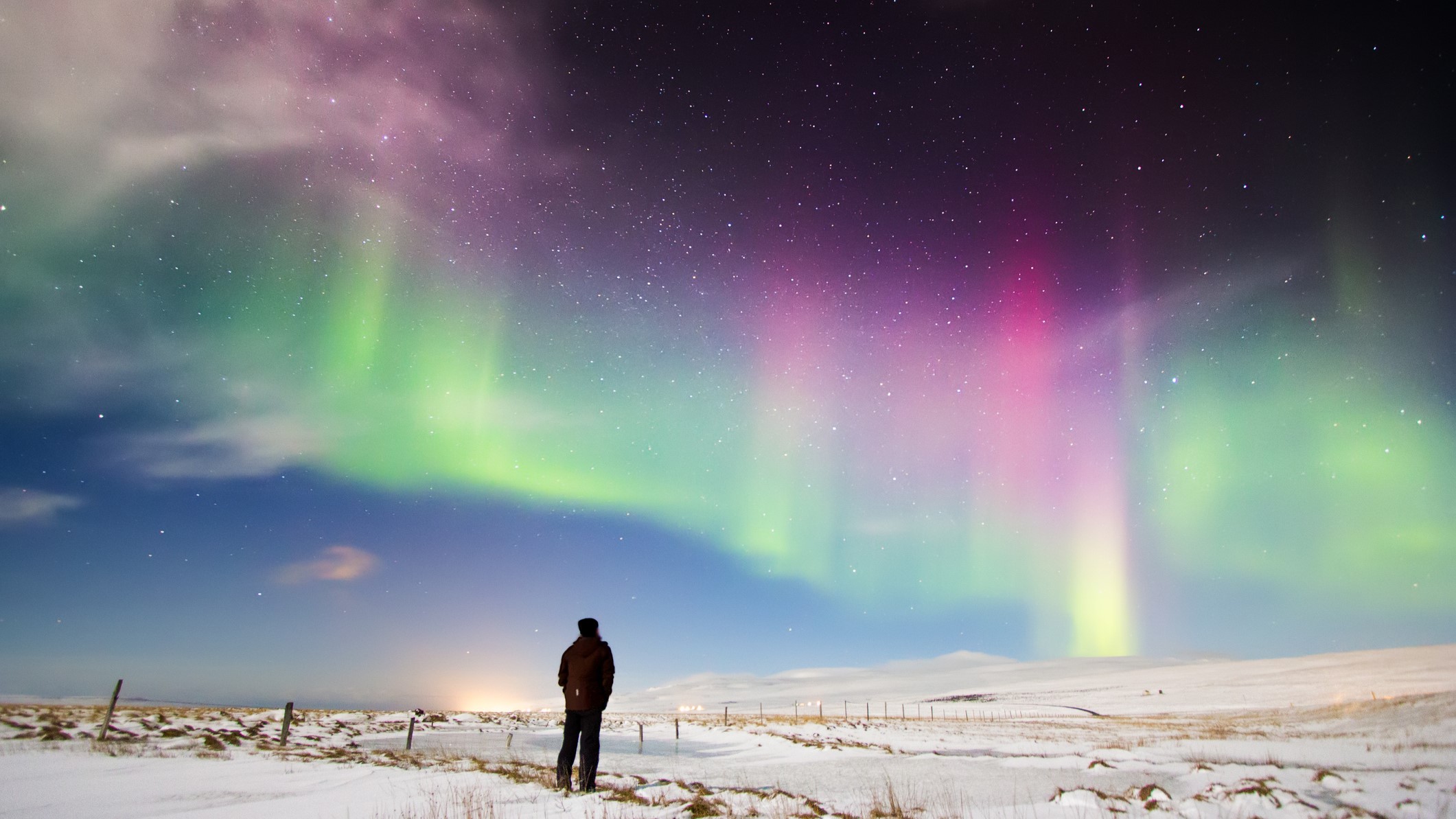
The aurora, also known as the northern lights (aurora borealis) or southern lights (aurora australis), is a breathtaking natural phenomenon that has captivated humans for millennia.
This remarkable spectacle occurs near Earth's poles and manifests as a dazzling display of dancing light, caused by the interaction between solar particles and our planet's atmosphere. Auroras come in a wide variety of colors — from green to pink to blue and purple — that can leave skywatchers both mesmerized and mystified.
But there's a method to this auroral madness. In this comprehensive guide, we delve into the science behind the colors of aurora and explore what produces these famous sky shows.
Before we discuss the different colors of aurora, let's first quickly remind ourselves how auroras form.
Auroras are caused by energized particles from the sun slamming into Earth's upper atmosphere at speeds of up to 45 million mph (72 million kph). Earth's magnetic field then redirects the particles toward the north and south poles.
The electrically charged particles then enter Earth's atmosphere, exciting gas atoms and molecules and generating auroras. The process is similar to how neon lights work: When the molecules and atoms get "excited" by electrons, they must return to their original energy (ground state) and do so by releasing the energy as photons (light). The color of the neon light depends on the gas mixture inside the tube, just like the color of auroras depends on the gas mixture in the atmosphere.
Earth's atmosphere is approximately 78% nitrogen, 21% oxygen, 0.93% argon and 0.04% carbon dioxide. Our air also contains trace amounts of neon, helium, methane, krypton, ozone and hydrogen, as well as water vapor.
The following sections will explore how atmospheric composition and the altitude at which solar particles collide with these gases play a crucial role in determining the colors of auroras.
You can also find out when you are most likely to see the northern lights with our aurora forecast, updated daily.
Green aurora
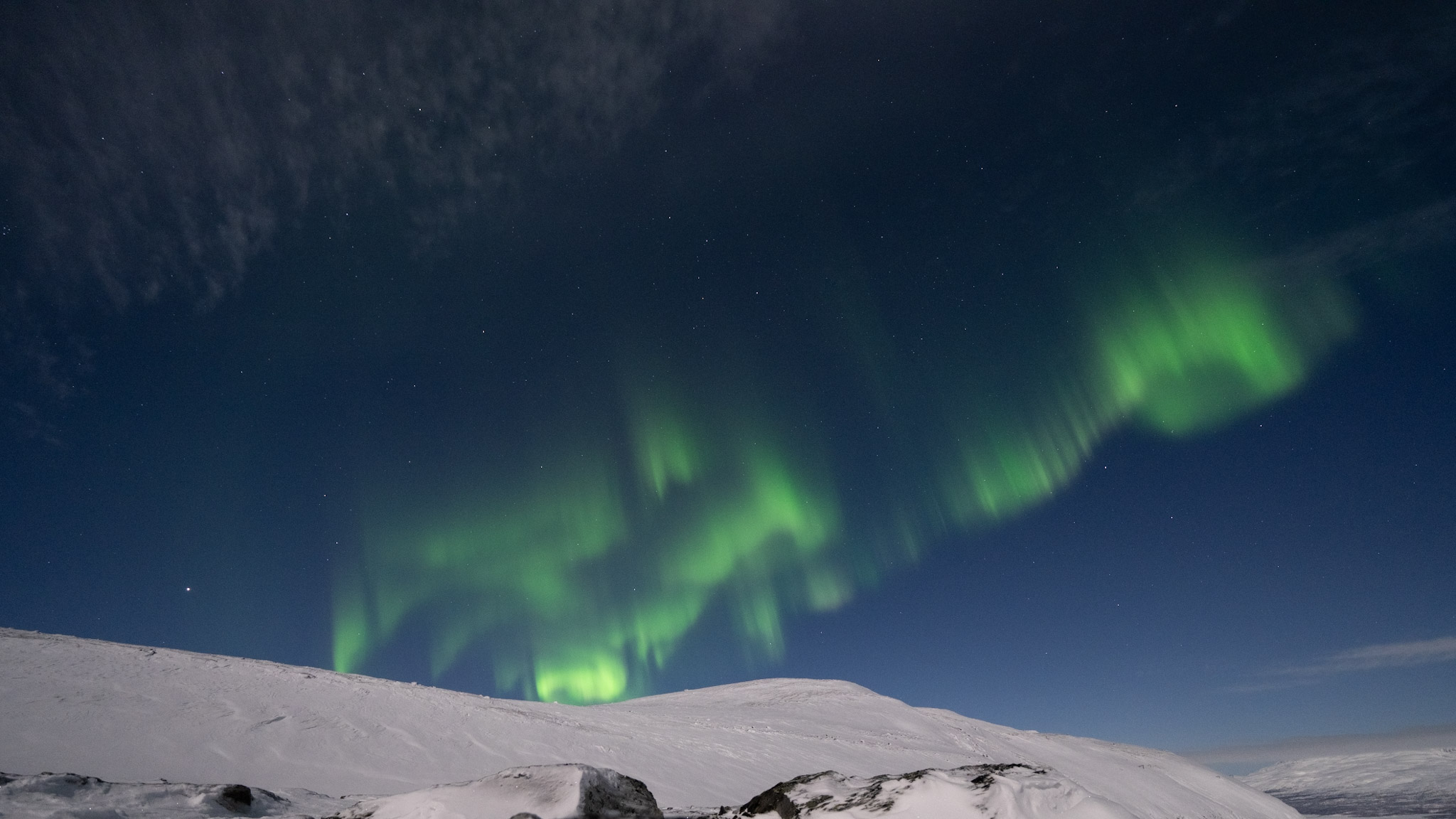
The most common aurora color is green.
Green auroras are typically produced when charged particles collide with high concentrations of oxygen molecules in Earth's atmosphere at altitudes of around 60 to 190 miles (100 to 300 kilometers), according to the Canadian Space Agency (CSA).
We also see green auroras better than any other color, as the human eye is most sensitive to the green color spectrum.
Red aurora
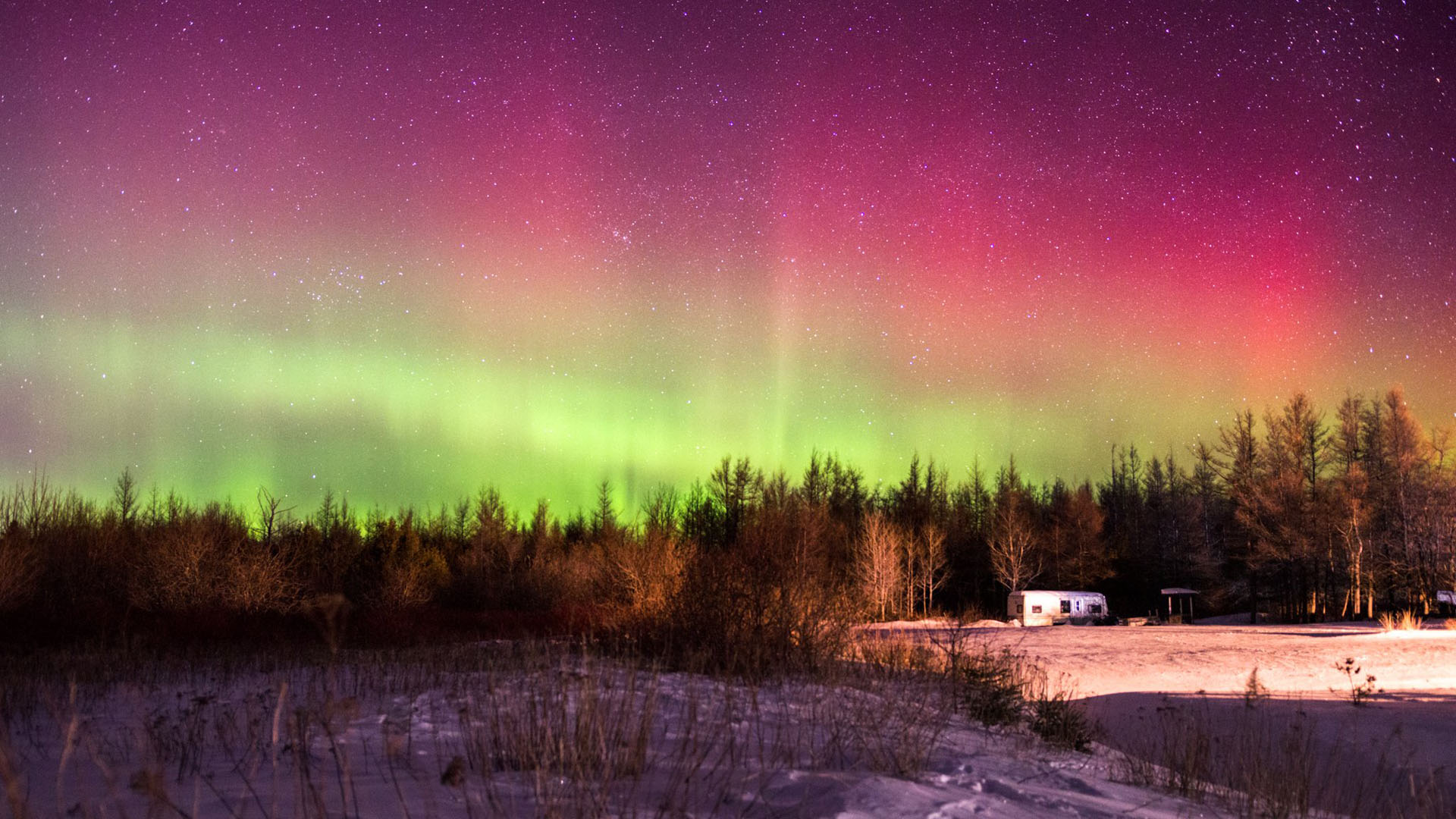
Red auroras are comparatively less frequent and are usually associated with intense solar activity.
They occur when solar particles react with oxygen at higher altitudes, generally around 180 to 250 miles (300 to 400 km), according to the CSA.
At this height, oxygen is less concentrated and is excited at a higher frequency or wavelength, making reds visible. Red auroras are often seen at the higher edges of the display.
Blue and purple aurora
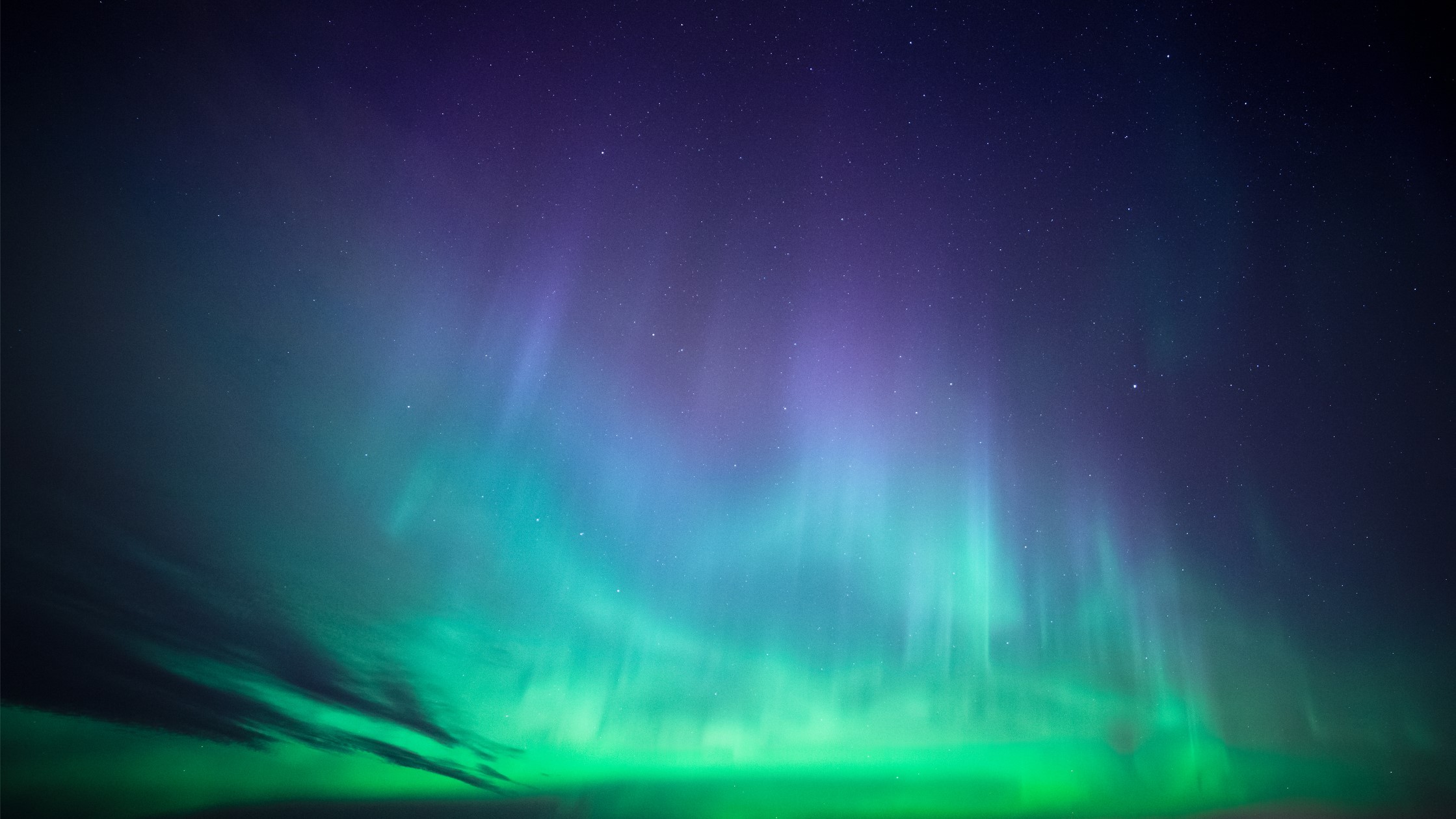
Blue and purple auroras are even less common and also tend to appear during periods of high solar activity.
These colors are produced when solar particles collide with nitrogen in Earth's atmosphere at an altitude of 60 miles or less, according to aurora travel company The Aurora Zone.
Blue and purple auroras tend to be visible toward the lower parts of the display.
Yellow and pink aurora
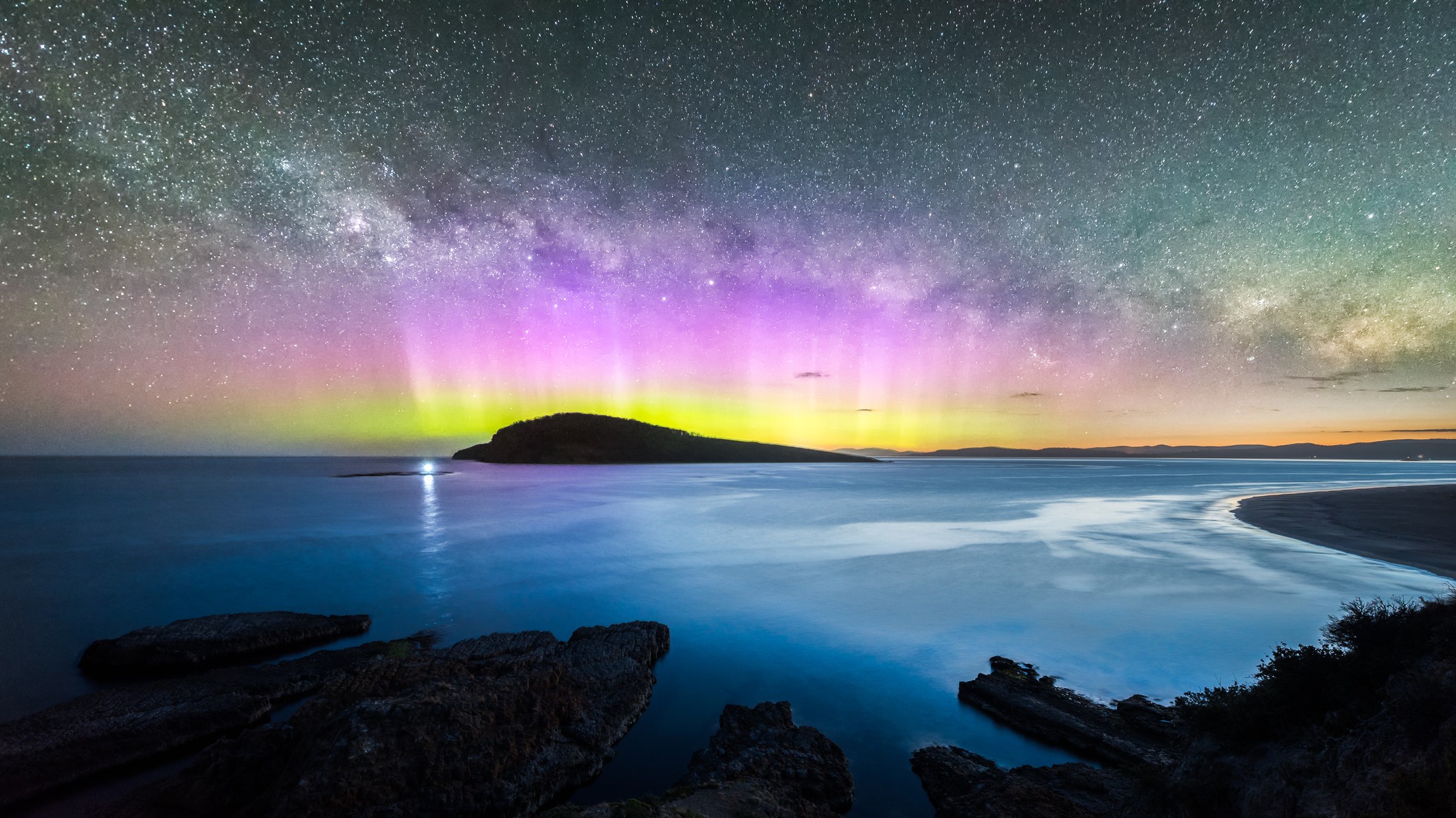
Yellow and pink auroras are rare and are typically associated with high solar activity. These colors result from a mixture of red auroras with green or blue auroras.
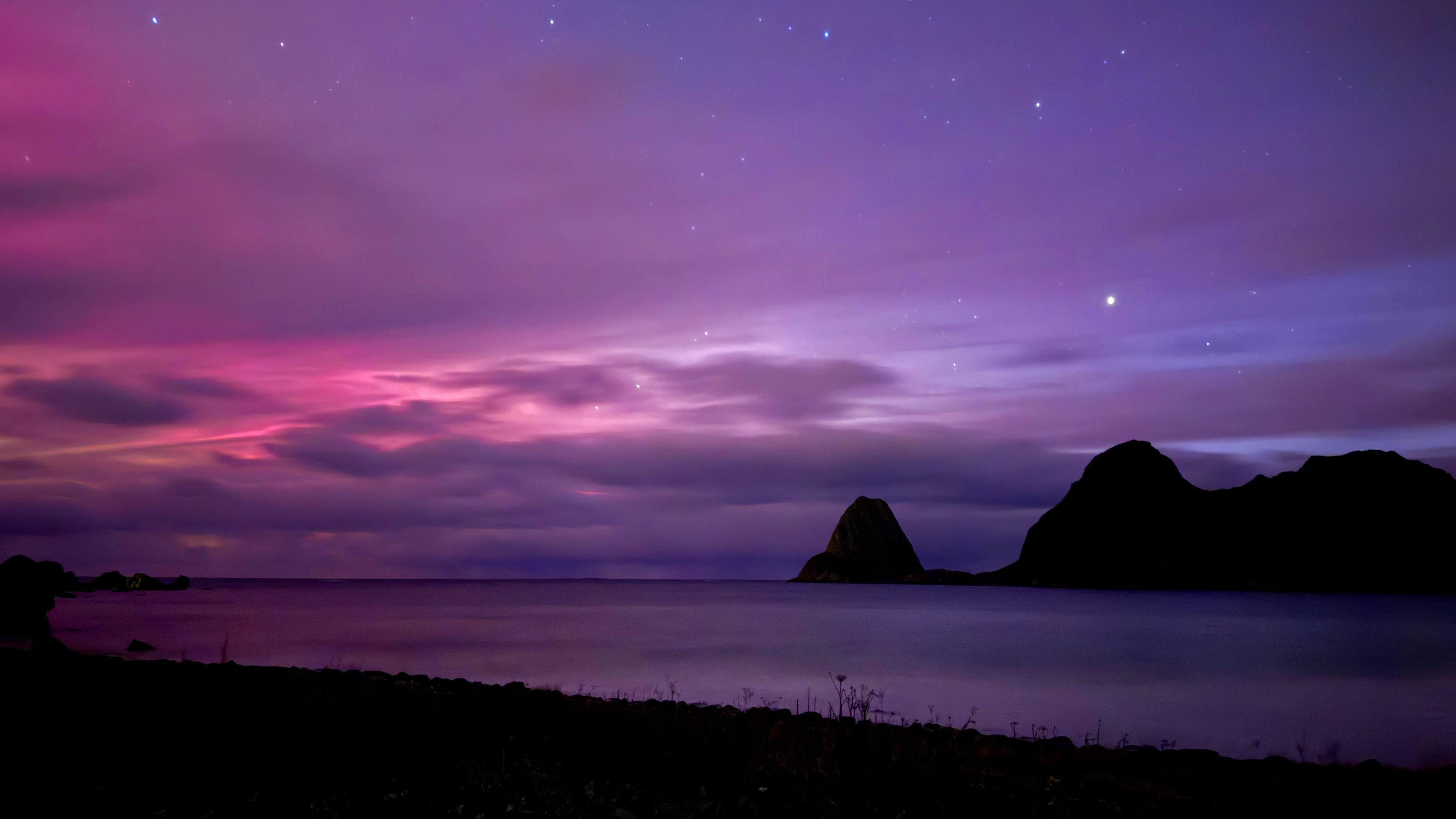
The role of solar activity
Solar activity, including solar flares and coronal mass ejections, plays a significant role in determining the intensity, color and frequency of auroral displays. During periods of high solar activity, Earth's atmosphere is bombarded with a higher number of solar particles, increasing the likelihood of more vibrant and varied aurora colors.
The sun's activity fluctuates on an 11-year solar cycle, with periods of peak activity known as solar maxima. Solar activity is now on the rise during the current solar maximum period bein observed in solar cycle 25.
Related: Aurora myths, legends and misconceptions
Aurora color FAQs answered by an expert
We asked Dr. Elizabeth MacDonald a few frequently asked questions about aurora colors.
Why are northern lights that appear at low latitudes red?
Two reasons: One, the red occurs at higher altitudes and can thus be seen further away from the poles: sometimes all you see is the upper edge of the red peeking over the horizon. Secondly, during very large storms, there is another kind of aurora that is predominantly red and which occurs at lower latitudes.
As Earth's atmosphere has more nitrogen compared to oxygen, why aren't blue/purple auroras that are caused by nitrogen the most common?
The aurora occurs so high up that the mix of air we are familiar with is not the same as at 100 km. The atmosphere there is much less dense, and stratified by gravity into layers. The nitrogen layer lies above the oxygen layer.
What's the rarest aurora color?
It's hard to say because auroral colors blend in an ever-changing chemistry mix and that is how you can get some of the rarer colors that are observed.
Additional resources
To increase your chances of viewing an aurora, monitor aurora forecasts provided by organizations like the University of Alaska Fairbanks' Geophysical Institute and the U.S. National Oceanic and Atmospheric Administration (NOAA). These forecasts estimate the likelihood of an aurora being visible based on geomagnetic activity, providing both three-day and 30-minute predictions.
If you're an avid aurora chaser or want to learn more about sightings all over the world, Aurorasaurus is a citizen science site where you can report your aurora sightings and also learn more about auroras with their informative blog.
To keep up with the latest space weather findings, visit NOAA's Space Weather Prediction Center to see the most recent solar X-ray data from the agency's GOES weather satellites that perch over the eastern and western U.S.
Bibliography
Canadian Space Agency. (2022, September 27). The colours of the Northern Lights. Canadian Space Agency. https://www.asc-csa.gc.ca/eng/astronomy/northern-lights/colours-of-northern-lights.asp
The Human Eye’s response to light. Iowa State University. (n.d.). https://www.nde-ed.org/NDETechniques/PenetrantTest/Introduction/lightresponse.xhtml
The science of the northern lights. The Aurora Zone. (n.d.). https://www.theaurorazone.com/about-the-aurora/the-science-of-the-northern-lights







